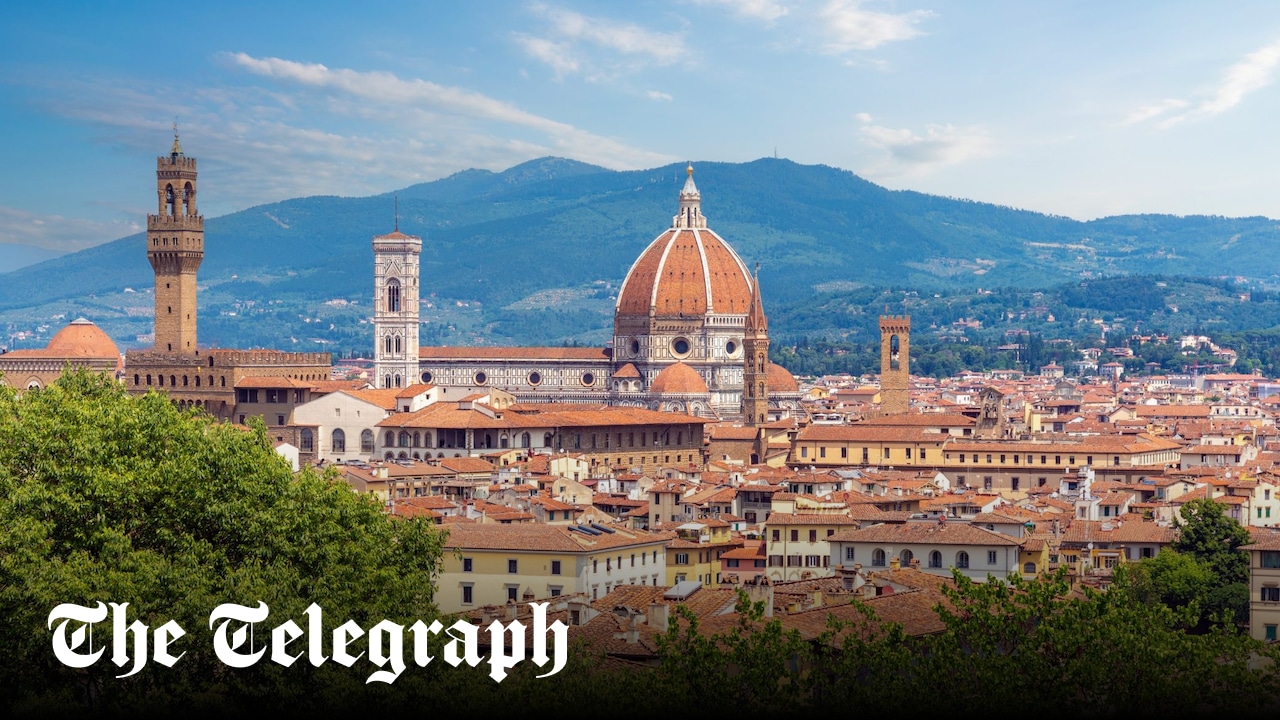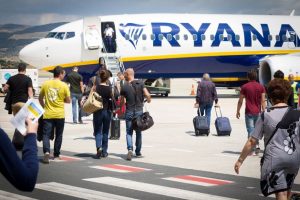There’s more to the city than museums and monuments, explore like a local with an insider guide to 48 hours in the cradle of the Renaissance
Copy link
twitter
facebook
whatsapp
email
Copy link
twitter
facebook
whatsapp
email
Copy link
twitter
facebook
whatsapp
email
Copy link
twitter
facebook
whatsapp
email
Firenze, the cradle of the Renaissance, is one of Europe’s great art cities. With frescoes by Giotto and Ghirlandaio, canvases by Botticelli and Bronzino, and sculptures by Michelangelo and Giambologna, there is so much exquisite art and architecture within its ancient walls that it’s easy to become overwhelmed.
But, there is more to handsome Florence than just museums and monuments. It is bursting with quirky shops and quality crafts; a living city with an eclectic cultural life that embraces opera, classical music and contemporary art. The restaurant and nightlife scene is also very much thriving.
Escaping for some downtime is rather convenient, given the city’s proximity to the vine-covered hills of Chianti, as well as other Tuscan art towns such as Arezzo, Siena and Lucca. Florence’s diminutive size means everything is very accessible, with most of the main sights lying within walking distance of one another. All in all, this is one of Europe’s most civilised long-weekend destinations.
And for more Florence inspiration, turn to our guides on the city’s best hotels, restaurants, nightlife, attractions and shopping.
The Florence Dance Festival, which runs through June and July, is based in the atmospheric great cloister of the church of Santa Maria Novella, and in other venues around the city. It features established dancers, choreographers and dance companies, as well as young emerging talents in the world of contemporary dance. Look out for Compañía Antonio Gades’ “Carmen”, among the highlights of the 2025 festival.
The fifth floor of Florence’s newly opened The Social Hub Belfiore is now the largest terrace space in the city. The 7,000sq m masterpiece has knock-out views over the city to the Duomo. It incorporates a public park and sinuous Mediterranean gardens, lots of seating and socialising spaces and a bar serving all-day drinks and snacks; morphing into a cocktail bar in the evening, with pop-ups offering street food. The USP is the 50m pool, stretching the length of the building, which is open to the public in the evenings offering swims with views.
The spectacular 2,000-seat Roman amphitheatre in Fiesole, just to the north of Florence, is the setting for the eclectic Estate Fiesolana arts festival, from June 6 to September 11, featuring a line-up of international artists from the worlds of classical music, jazz, dance, theatre and cinema. There is even the Greek tragedy, Agamemnon, on July 13. The venue alone makes the trip worthwhile (bring a cushion – the stone seats are hard), but you could also catch the likes of Paolo Fresu and Igudesman & Joo, plus a series of sunset concerts by young musicians from the Scuola di Musica di Fiesole.
Return to index
Get an early start on your first day to tick off some of the busier sights. To get a feel for the layout of the city, tackle the 414 steps to the top of Giotto’s Campanile (Piazza del Duomo). The bell tower offers magnificent views over the sea of terracotta rooftops in the centro storico, divided by the Arno River.
Back on street level, size up the set piece that is Piazza San Giovanni with the vast bulk of the Duomo, the Baptistery and the Campanile – Florence’s spiritual heart. The Duomo is worth visiting for the sheer size of the place and to climb inside Brunelleschi’s Dome (another 463 steps).
At the southern end of Via Calzaiuoli lies Piazza della Signoria, Florence’s political power hub past and present, with its imposing town hall and monumental statuary. Highlights include Benvenuto Cellini’s Perseus, shown brandishing the severed head of Medusa under the Loggia dei Lanzi.
Take a cappuccino break on the terrace of historic Café Rivoire (recently – and controversially – revamped under new ownership) and brace yourself for what is arguably the world’s greatest haul of Renaissance art at Galleria degli Uffizi. To view the entire collection at leisure, you need at least four hours. Must-sees include the three great Maestàs by Giotto, Cimabue and Duccio, Gentile da Fabbriano’s Adoration of the Magi, the Botticellis and Caravaggio’s Medusa. Advance booking is essential.
The lunch-only Trattoria Sergio Gozzi lies in the heart of the San Lorenzo market area. The pasta with ragù, ribollita (a bean and bread soup), stuffed rabbit and Florentine tripe are cheap and authentic.
Skip dessert and head over to the Mercato Centrale, housed in a 19th-century iron and glass building. The ground floor is filled with traditional produce stalls, but the first floor has been transformed into a food hall laid out with stalls selling a staggering array of top-notch produce from all over Italy, including melting, ricotta-filled Neapolitan sfogliatelle from master baker Sabato Sessa whose family opened their first pastry shop in Naples in 1930.
The stalls set up outside around the market building sell leather goods and other knick-knacks; prices are cheap, but don’t expect the quality to be the highest and do be prepared to bargain.
One of Florence’s best kept secrets is just around the corner in Palazzo Medici-Riccardi; the tiny Cappella dei Magi (Via Cavour, 3) is decorated with top-to-toe frescoes by Benozzo Gozzoli. A gentle boat tour along the Arno in a traditional wood barchetta – with prosecco aperitivo – is a relaxing way to end a busy day and offers an unusual perspective on the city. The tour starts with a guided walk from Piazza della Repubblica to the waterfront. Advance booking recommended.
For a taste of Old Florence, head to the Sant’Ambrogio market area and Trattoria Cibreo. The polished take on gutsy local dishes such as chicken liver paté on toast, ‘baccalà’ (salt cod) with potatoes and leeks ‘au gratin’ and chicken and ricotta ‘polpette’ in tomato sauce will set you up for the next day’s sightseeing. Don’t leave without trying at least one of the famous desserts; cheesecake with bitter orange marmalade and the flourless chocolate cake are both legendary.
Wind up the evening with a nightcap in Santa Croce. The neighbourhood comes alive after dark with studenty drinking dens and small clubs, but Locale, with its mod-Renaissance décor, craft cocktails, late-night tunes and smartly dressed clientele, offers something altogether more sophisticated.
Start the day by the statue of master jeweller Benvenuto Cellini in the middle of Ponte Vecchio. This ancient bridge may feel like tourist central in high season, but it has been a hub for small jewellery shops since the 14th century. Lovers of bling will be dazzled by the treasures on offer and competitive gold prices. Avoid the mass-produced stuff and seek out Fratelli Piccini at no. 21/23R where the jewellery is still made on site, and Dante Cardini, established in 1988, at no. 34.
Head south across the bridge to Oltrarno (literally ‘beyond the Arno’), a beguiling area of grand palazzi, cobbled streets, quirky boutiques, artisan workshops and trendy cafés and restaurants. Pop into Madova to stock up on exquisitely made gloves. Art hounds should check out Pontormo’s masterful Mannerist Visitation in the tiny church of Santa Felicità before heading up the steep and winding Costa San Giorgio.
Almost at the top is the Bardini Gardens, which offers fabulous views over the city. A little further lies the Forte di Belvedere, the fortress built by Ferdinando dei Medici, now a temporary exhibition space and popular hangout for young locals. Here, the view stretches beyond the cityscape into the rural Tuscan idyll of villas, walled gardens and olive groves.
Refuel at Le Volpi e L’Uva, a wine bar known for showcasing small, under-the-radar producers from all over Italy. It’s the perfect spot for a cheese and pancetta-topped crostone (toasted sandwich) and a glass of something interesting.
En route to the eastern reaches of the Oltrarno, you can take in the bucolic Boboli Gardens, central Florence’s largest green space with fountains, grottoes, quiet walkways and lichen-covered statues. Be sure to use the quieter Annalena entrance on Via Romana.
The pretty Piazza della Passera lies at the heart of what is known as Florence’s artisan quarter, and is home to hole-in-the-wall Gelateria della Passera where Cinzia Otri has won many awards for her creations that include classics – coffee, chocolate, almond and so on – along with more creative numbers such as Mojito and Fatal Attraction, a yoghurt and apricot mix garnished with glazed apricots and white sesame seeds.
The narrow, cobbled streets around the square are lined with the workshops of skilled craftsmen, dating back to the mid-16th century when the Medicis moved into nearby Palazzo Pitti. With them came the cabinet makers, seamstresses, bookbinders, gilders and furniture restorers.
You can visit many of the workshops to see today’s artisans in action during shop hours (Monday to Friday, 8.30am-12.30pm and 3pm-6pm, but hours can vary) as long as you don’t get in the way.
Nearby Piazza Santo Spirito, which hosts a small daily market, is the centre of the boho-chic Oltrarno; the eponymous church, with its blank facade, was Brunelleschi’s final, unfinished work and has a serene, beautifully proportioned interior.
Il Santo Bevitore is a vaulted, wood-panelled restaurant hugely popular with both local foodies and clued-up tourists, so booking is essential in order to taste the mod-Tuscan cuisine: mushroom risotto with guinea fowl and blackcurrants and roast suckling pig are musts.
Piazza Santo Spirito is also a popular year-round hangout for late-night drinks and music. Linger in the square to catch an al fresco gig in the summer; when the temperature drops, go for a drink at Volume, an inviting café-bar with vaulted ceilings and plenty of books.
Return to index
Planning to stay longer?
Florence is lovely from late spring through to early autumn, when balmy temperatures, al fresco eating and drinking and a busy open-air arts and concert season make this one of Italy’s most vibrant summer destinations. However, this is also the most popular period, when hotel rates are at their highest and the queues for the Uffizi Gallery are at their longest.
If Florence often roasts in July and August, it can also get bitterly cold in winter – but if you don’t mind wrapping up, January and February are delightfully uncrowded months when you can often find serious accommodation bargains.
Music lovers should check out the schedule of Florence’s world-class classical music and opera venue, the Teatro del Maggio Musicale, before planning a trip; it’s also worth glancing at the exhibition calendar of dynamic arts centre Palazzo Strozzi, which puts on some top-flight shows.
Return to index
Hotel Lungarno provides its guests with an unbeatable location just steps from the Ponte Vecchio, alongside five-star service, magnificent river views and superb Michelin-starred dining at Ristorante Borgo San Jacopo.
Read our full review here.
AdAstra is among the most special hotels in Florence, due to both its privileged setting in one of the city’s great private gardens and its exceptionally charming atmosphere. An aristocratic feel pervades the residence, thanks to its modelling on the concept of a Parisian hôtel particulier and near-endless bounty of period features.
Read our full review here.
The first Italian opening of Dutch brand The Social Hub (formerly The Student Hotel), lies a couple of tram stops from the centre of Florence. It has a hip, buzzy, community-orientated vibe, highly competitive rates and there are fantastic facilities including co-working spaces, a bookshop and a rooftop pool.
Read our full review here.
Where to stay
Return to index
Nicky has lived in the city since 1981 and was an orchestral musician in her past life. After tasting bruschetta – drizzled with peppery, freshly pressed Tuscan olive oil – in Florence for the first time, she’s never looked back.




